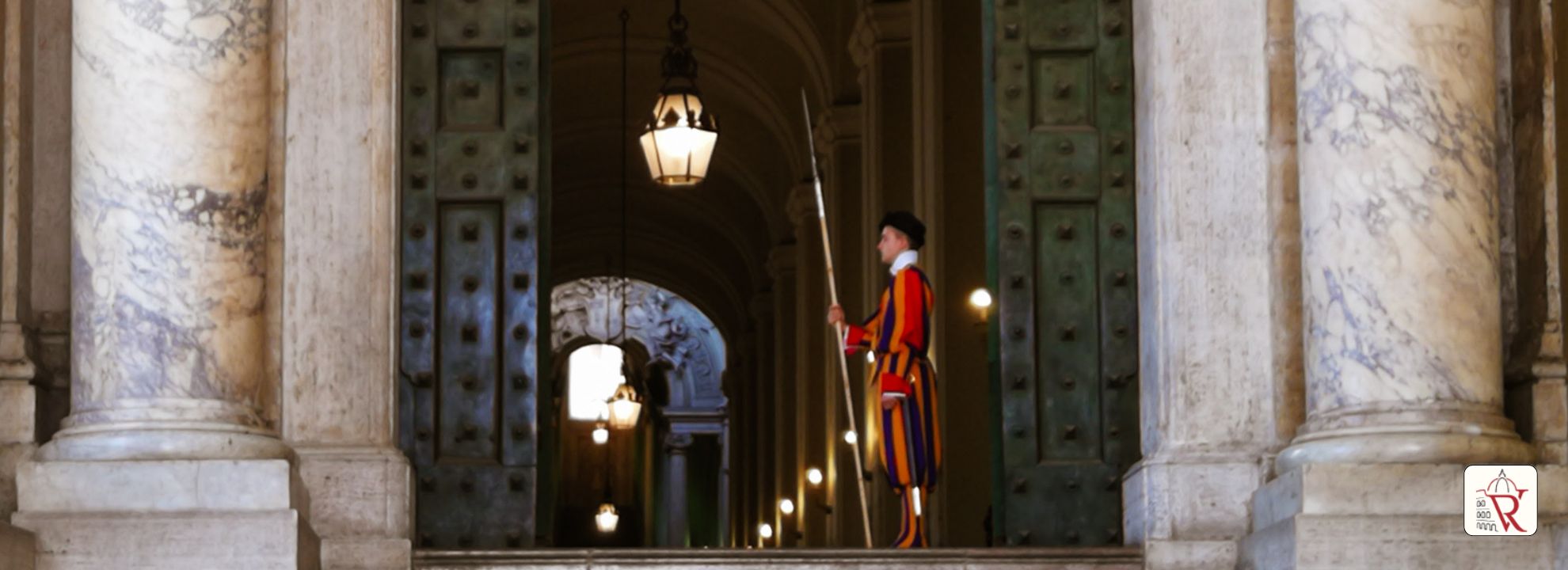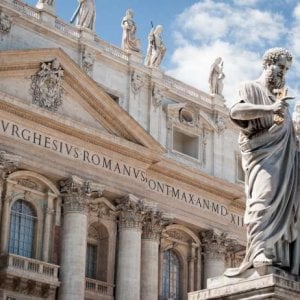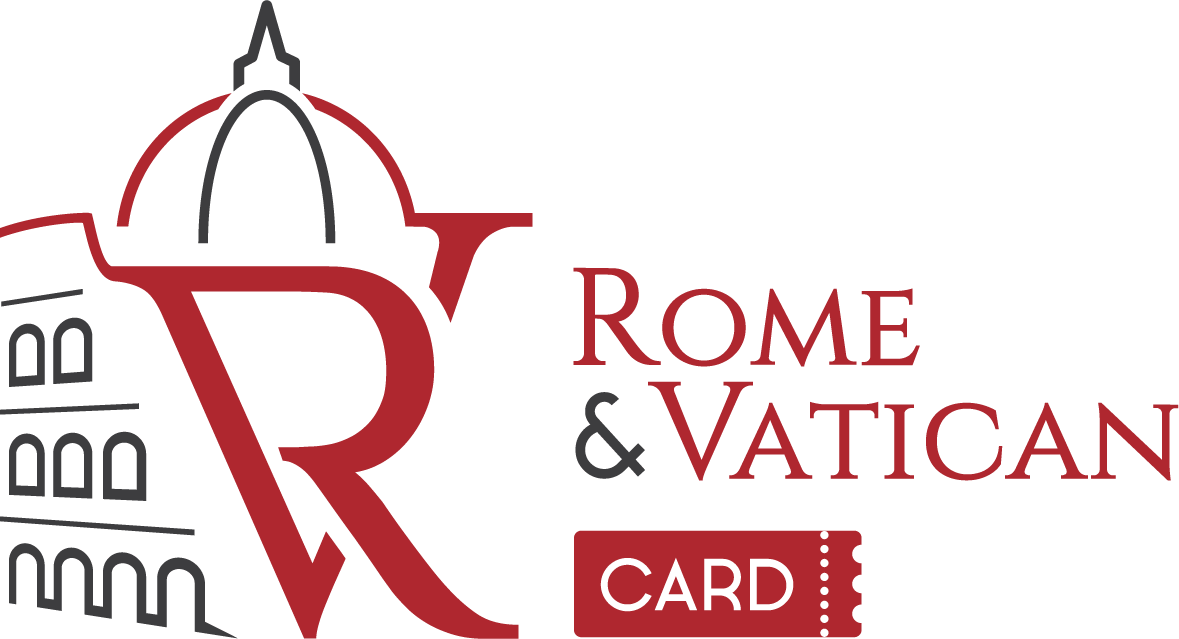Holy Doors in Rome: what they are, where to find them and their meaning
- 11 min read
This article covers what are the holy doors, where to find the 4 holy doors, what is the significance of the holy doors in Rome, and what to expect when visiting the holy door of St. Peter’s Basilica and the other major basilicas during the Jubilee. You’ll also discover insights into the pope opening the holy door and practical travel tips for pilgrims.


Vatican Museums + Sistine Chapel + St John and St Peter's Basilica | Guided Tour
What are the Holy Doors?
Imagine a door that’s opened only once every 25 years, and only by the Pope himself. A door that marks not just a place, but a moment — a passage from the ordinary to the sacred. These are the holy doors of Rome. Built into the four major papal basilicas of the city, they’re sealed shut with bricks outside Jubilee years, waiting silently to be opened with great ceremony and meaning. Crossing them isn’t just an action, it’s a statement of hope, of forgiveness, of beginning again. The tradition started in 1423, when Pope Martin V opened the first holy door at St. John Lateran, and ever since, pilgrims from around the world have journeyed to Rome to step through them.
The meaning of the Holy Doors
At first glance, they may seem like ordinary doors. However, the Holy Doors of Rome are portals to something far deeper: they symbolize grace, mercy, and spiritual rebirth. Accordingly, crossing one during a Jubilee is not just a gesture — it is a profound act of faith.
Traditionally sealed with bricks, these doors are opened only during Holy Years, typically every 25 years or when the Pope declares an extraordinary Jubilee. When the Pope opens the Holy Door, it signals the official beginning of this sacred time.
If you’re wondering what is the significance of the Holy Doors in Rome, the answer lies in their ritual use: walking through a holy door offers pilgrims a chance to receive a plenary indulgence, provided they also go to confession, receive communion, and pray for the intentions of the Pope. These doors invite a personal transformation, a passage from sin to grace.
How to recognize a Holy Door?
Each holy door is distinct, often adorned with religious symbols, bronze panels, or inscriptions. However, during the Jubilee, they’re marked with special signs and are opened with solemn rituals. As soon as you approach one, you’ll notice the flow of pilgrims, the prayers, and often a dedicated path leading to it. Once inside, the aura of silence and reverence will tell you—you’ve entered something extraordinary.

Vatican Museums + Sistine Chapel + St John and St Peter's Basilica | Guided Tour
Where are the Holy Doors in Rome?
The four major papal basilicas — each with its own holy door — are located across the Eternal City. Together, they form a spiritual itinerary that countless pilgrims follow each Jubilee. So, Where are the 4 Holy Doors in Rome? They can be found at:
- St. Peter’s Basilica (Vatican City)
- St. John Lateran
- St. Mary Major
- St. Paul Outside the Walls
Let’s explore each one, understand how to visit them, and discover the experiences they offer.
1. Holy Door of St Peter’s Basilica: the Holy Door Vatican
Even if you’ve seen pictures of the Vatican, nothing quite prepares you for the moment you arrive at St. Peter’s Square. The architecture overwhelms, but it’s the holy door of St. Peter’s Basilica that quietly holds the deepest meaning.
This is the door the Pope personally opens to inaugurate the Jubilee. In fact, it is the most visited and revered of all the Holy Doors. Accordingly, walking through it during the Holy Year is an unforgettable experience.
Where is the Holy Door located in the St Peter’s Basilica?
The Holy Door (Porta Santa) in St. Peter’s Basilica is located on the far-right side of the main entrance façade, when facing the basilica from St. Peter’s Square. It’s the last of the five entrance doors, near the Scala Regia (Royal Staircase) that leads to the Apostolic Palace.
How to get to Holy Door of St Peter’s Basilica
To get there, take Metro A to Ottaviano, then walk to Piazza Pia — this is where the official Jubilee route begins. Once inside, you’ll be surrounded by Michelangelo’s dome, Bernini’s altar, and centuries of history. As you cross the door, the symbolism becomes clear: this is a passage not only into the church but into a renewed spiritual life.
The Holy Door of St Peter’s Basilica closes again on January 6 2026, at the Feast of the Epiphany.
2. St. John Lateran Holy Door: the first and oldest Holy Door
The holy door of St. John Lateran is not just another pilgrimage stop—it’s the origin. As the oldest basilica in the West and the Pope’s official cathedral, its door was the very first to be declared holy in 1423. Consequently, it holds a special status in the Jubilee tradition.
Where is the Holy Door located in the St John Basilica?
It is the last door on the left among the five large entrance doors on the main front of the basilica. Like other Holy Doors in Rome, it is sealed from the inside and opened only during a Jubilee Year.
How to get to Holy Door of St John Basilica
Located near Metro B (San Giovanni station), this basilica invites pilgrims to pause and reflect. As you walk up the stairs toward its neoclassical facade, you’re entering a place steeped in history and reverence. Crossing the holy door here feels like retracing the steps of centuries of pilgrims.
Nearby, visit the Scala Sancta — the Holy Stairs believed to be those Jesus climbed in Pontius Pilate’s palace.
The Holy Door of St John Basilica, will close on December 28, 2025, so plan your journey accordingly.
3. St Mary Major Holy Door: the Basilica of Pope Francis
Unlike the grandeur of St. Peter’s or the formality of the Lateran, St. Mary Major offers a more intimate encounter. The Holy Door of this basilica, dedicated to the Virgin Mary, exudes a sense of peace and protection.
Where is the Holy Door located in the St Mary Major Basilica?
In the Basilica of Saint Mary Major (Basilica di Santa Maria Maggiore) in Rome, the Holy Door (Porta Santa) is located on the far-left side of the main entrance façade, when facing the basilica from Piazza di Santa Maria Maggiore.
How to get to Holy Door of St Mary Major Basilica
This church is easy to reach — just a short walk from Termini or Vittorio Emanuele Station (metro A). Upon entering, you’re met with golden mosaics and ancient frescoes. However, the real beauty lies in the subtle details: the soft lighting, the aroma of incense, the sound of whispered prayers.
Many pilgrims come here to pray before the icon Salus Populi Romani, long considered a symbol of divine intercession in times of crisis. Especially during Jubilee, this basilica becomes a haven for those seeking maternal comfort and hope.
The St Mary Major Holy Door remains open until December 28, 2025.
4. Holy Door of St Paul Outside the Walls: the Apostle’s Legacy
If you long for a quieter, more reflective moment, then make your way to St. Paul Outside the Walls. Though slightly removed from the city center, its Holy Door is one of the most moving. The silence here is almost sacred.
Where is the Holy Door located in the St Paul Basilica?
In the Basilica of Saint Paul Outside the Walls (San Paolo Fuori le Mura), the Holy Door (Porta Santa) is located on the far-right side of the main façade, when facing the basilica from the large colonnaded courtyard (the quadriportico).
How to get to Holy Door of St Paul Basilica
To reach it, take Metro B to “Basilica San Paolo.” The basilica sits beside tall cypress trees and a peaceful courtyard. Once inside, you’ll see the tomb of St. Paul and the medallions of every pope in history — a timeline of the Church etched in stone.
Crossing this holy door is less dramatic than St. Peter’s, but perhaps even more profound. It invites introspection, calling you to listen more than speak.
The St Paul Holy Door closes on December 28, 2025.
The Fifth Door: Rebibbia Prison’s Unexpected Symbol
There is one more door — unlike the others, and all the more meaningful because of it. On December 26, 2024, Pope Francis opened a Holy Door inside the Rebibbia prison in Rome. Though not accessible to the public, it represents the inclusion of the forgotten in the Jubilee’s promise of redemption.
Getting to Rebibbia is possible via Metro B, yet the door remains behind bars, visible only to inmates, staff, and a few chosen clergy. Still, its existence sends a powerful message: even in the darkest places, hope can enter.

Vatican Museums + Sistine Chapel + St John and St Peter's Basilica | Guided Tour
How to visit the Holy Doors
- Register for St. Peter’s holy door through the Jubilee website — especially during peak dates.
- Check opening times for each basilica, as schedules may vary.
- Plan your route to cover all four holy doors in a day — possible with metro access and good timing.
- Receive the indulgence: confession (within 20 days), Eucharist, and prayer for the Pope are essential conditions.
Key dates to remember
- Holy Door of St. Peter’s Basilica: closes January 6, 2026
- St. John Lateran: closes December 28, 2025
- St. Mary Major: closes December 28, 2025
- St. Paul Outside the Walls: closes December 28, 2025
- Rebibbia Prison Door: opened December 26, 2024 (not publicly accessible)
What’s Behind the Holy Doors?
Behind each holy door lies a mystery — a spiritual passage from darkness to light. As Jesus said, “I am the door.” And so, walking through a holy door becomes a way to enter into his promise.
The rite may be centuries old, but the meaning is ever new. After all, it’s not the door that changes — it’s you.
Do you need a ticket to enter the Holy Door? How to register for Holy Door?
While entrance to the holy doors is free, registration is required to access the holy door of St. Peter’s Basilica — especially during the Major Events of the Jubilee. This is important to ensure safety and crowd management. To register for the Holy Doors, simply visit the official Jubilee website at www.im.va and click on the “Pilgrim Registration” page. You’ll be able to choose a time slot for your pilgrimage and receive all necessary updates accordingly.

Vatican Museums + Sistine Chapel + St John and St Peter's Basilica | Guided Tour
Is there a dress code for visiting the Holy Door?
Yes, visitors to all four basilicas — and especially to the holy door Vatican — are expected to follow a modest dress code. This means covering shoulders and knees, avoiding sleeveless tops or shorts. Since these are sacred places, respectful attire is not only appreciated but required.
FAQs – Everything You Need to Know About the Holy Doors
Do you need a ticket to enter the Holy Door?
Not exactly. While entrance is free, registration is required to walk through the holy door of St. Peter’s Basilica, especially during major Jubilee events. You can register through the official Jubilee website at www.im.va, under the “Pilgrim Registration” section.
How do you register for the Holy Door of St. Peter’s Basilica?
Visit www.im.va and click on “Pilgrim Registration.” You’ll select your date and receive confirmation. This helps ensure a smooth and reverent experience, even during crowded periods.
Can tourists visit the Holy Doors without being pilgrims?
Absolutely. While pilgrims may come for spiritual reasons, tourists are also welcome. However, even as a tourist, the act of passing through a holy door can be powerful—especially during the Jubilee.
How do I recognize a Holy Door?
Each holy door is clearly marked and often framed by signs or ceremonial decorations. During Jubilee years, the flow of pilgrims and the open state of the once-sealed door make them unmistakable.
Are there ceremonies for the opening and closing of the Holy Doors?
Yes. The pope opening the holy door of St. Peter’s Basilica is the most important Jubilee ritual. Other basilicas have similar ceremonies, sometimes led by cardinals. These are deeply symbolic and draw large crowds.
What if I want to visit all 4 Holy Doors in Rome in one day?
It’s ambitious but doable. With good planning, you can reach all four by metro and short walks. Start early, check opening times, and bring comfortable shoes. Additionally, allow time for reflection at each site.

Vatican Museums + Sistine Chapel + St John and St Peter's Basilica | Guided Tour
Related articles you might like
- Visit St. Peter’s Basilica: the Complete Guide 2025
- St Peter’s Basilica Dress Code: What to Wear for Your Vatican Visit
- Top Things to See Inside and Outside St. Peter’s Basilica: Square, Dome and Tombs

